Designers participate in product development from the concept design stage to make a new electronic medical record system for clinics
Published March 28, 2023

Published March 28, 2023
The Design Center is tasked with creating designs for hardware, software, services and other Fujitsu's products. Designers usually work on improving the user experience (UX) and user interface (UI) in the later stages of development, such as designing screen layouts, so the majority of design is done with finalized specifications. However, Fujitsu's new electronic medical record system for clinics, HOPE LifeMark-SX Cloud Entry Model (SX Entry Model), which released last year, was developed with designers involved from the planning stage, before product development even began. This made it possible to create an ideal product through deliberations by the Healthcare Division's development team together with the designers. We sat down with Ms. Kato, the design lead on the project, and Mr. Kaneko, the team's lead designer.
Interviewee profiles
Designers, Business Design Division, Design Center
Department names and titles were current at the time of the interview.
——— Ms. Kato, what have you worked on previously at Fujitsu?
Kato: Since I joined the company, I have worked on UX/UI design for various software and services. When I first joined, I was often in charge of designing systems for managing IT infrastructure, such as servers, storage, and networks. Then, I started to get involved with the Healthcare business around 2009 and gained the opportunity to design classic systems for medical clinics.
——— I see, that’s why the Healthcare Division approached you about developing this SX entry model.
Kato: When I was first approached three years ago, it was at a stage where nobody knew if the SX entry model would even become a product. It was our first interaction with Design Center at this stage and I was surprised at how quickly they approached us.
Kaneko: We originally had a product called HOPE LifeMark-SX. It led to the idea to create a new web-based medical record version that would be less expensive and less time-consuming to install. Later, Japan's Liberal Democratic Party also proposed the "Medical DX Vision 2030" initiative that promotes the use of electronic medical records by all medical institutions, so this strategy was right in line with how things were moving.
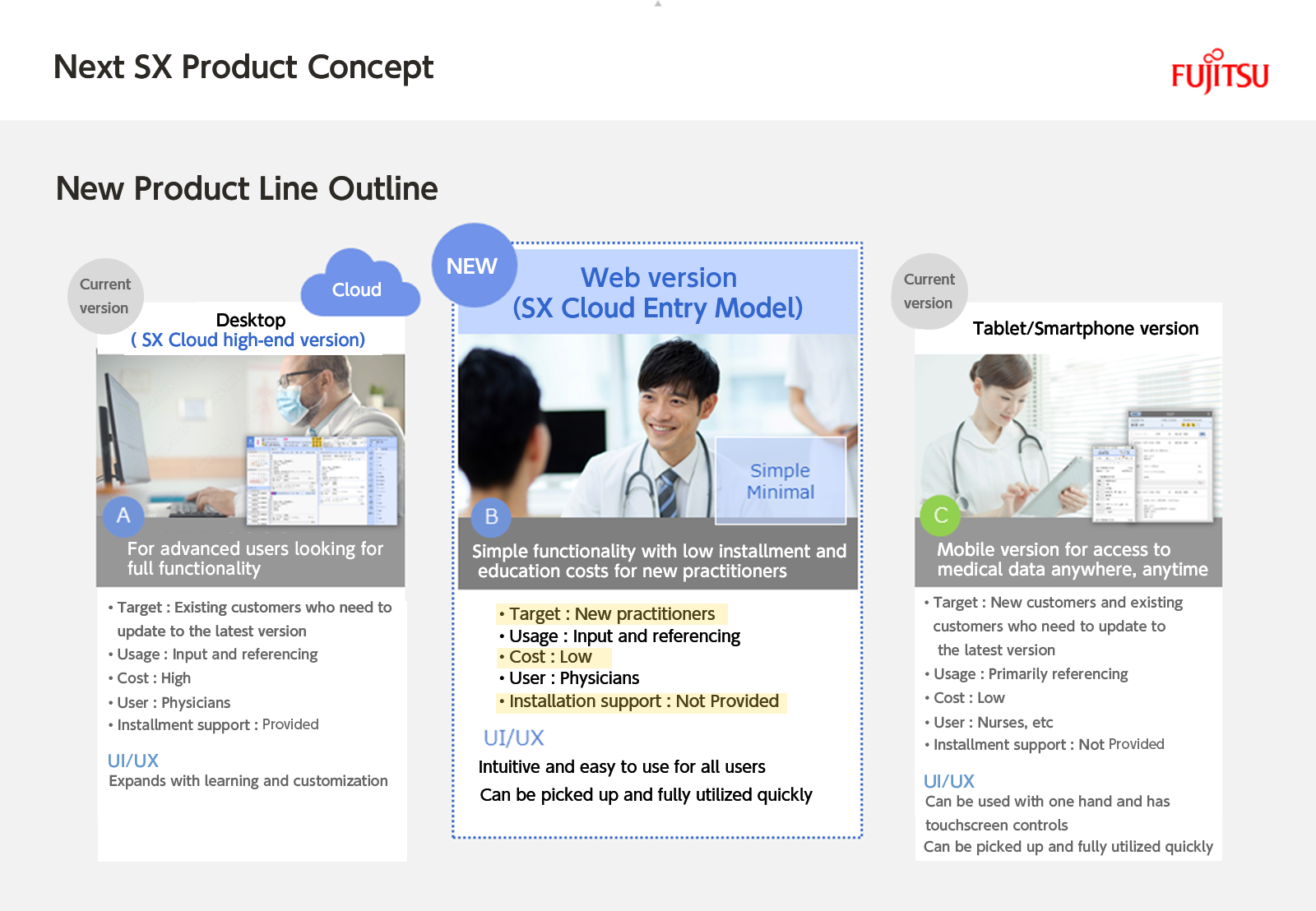
Kato: The Healthcare Division wanted the new SX Entry Model to be intuitive and easy to use, even for first-time users of electronic medical records. Therefore, they decided to have designers get involved in development from an early stage to help turn this idea into an actual product and create a more appealing experience for the customer. This is how the collaboration between the design team and Healthcare Division at the planning phase began. The Healthcare Division carefully examined the functional aspects of the product, including using knowledge from their previous products and deciding which features to prioritize, while the Design Center organized concepts and usage scenarios, conducted market research with other companies' products, and designed screen layouts with an emphasis on ease of use.
Kaneko: Ms. Kato was the design lead on this project, while I took on a directorial and managerial role where I looked at trends in the HOPE series.
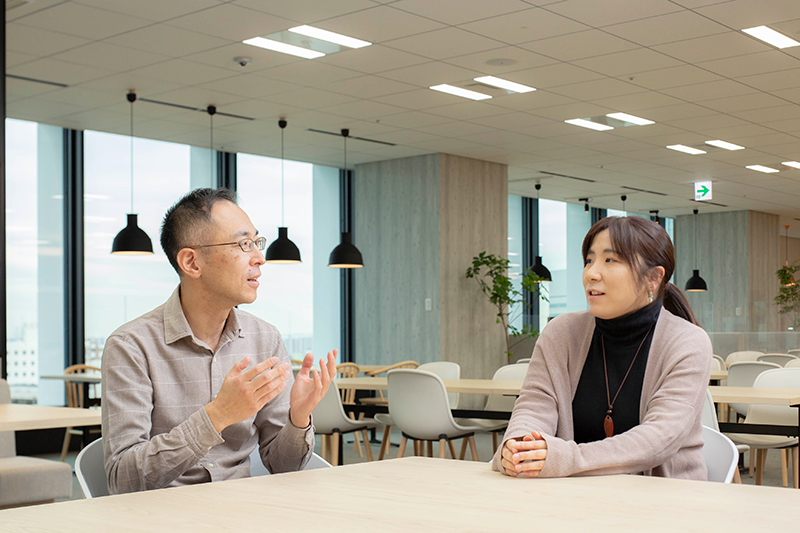
——— What is the concept behind the SX Entry Model?
Kato: In a word, it's simple and minimal. We were conscious of incorporating a good balance between functional needs and ease of use. That means, we aimed for a product that could be installed without the need for an SE to visit the clinic in person, and can also reduce the cost of training medical staff to use the system on the job.
——— What kind of clinics did you imagine would use the product?
Kato: We have a variety of clinics in mind, but have particularly targeted new clinics and those that are wanting to switch from paper records to electronic records. As the latter use paper records, if our product felt and could be used like paper records, it would be easier for them to use it. That's where we started.
Kaneko: We designed a completely new solution from scratch, utilizing the knowledge we had accumulated through the HOPE series. I think the reason we were able to avoid speed bumps in the development process was that the designers got involved in the design from the planning stage.
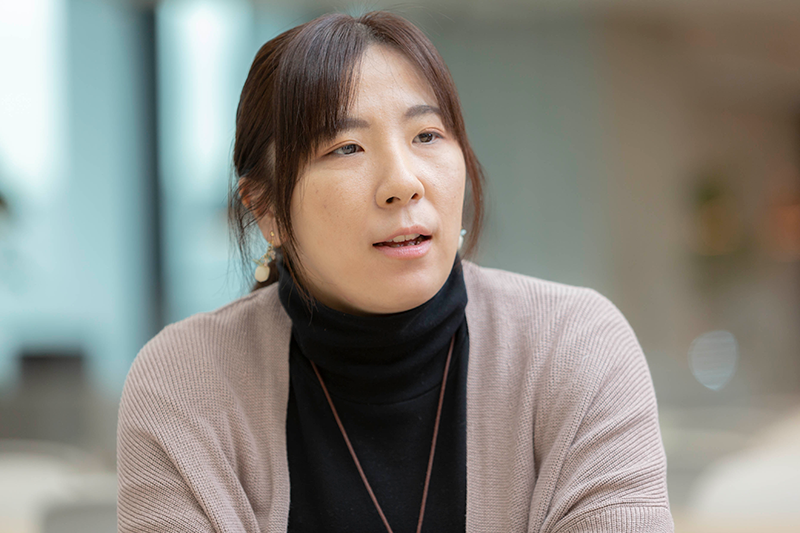 Ms. Kato, Design Center
Ms. Kato, Design CenterKato: It was great that the Design Center and the Healthcare Division were able to get on the same page about the product goals right from the early stages of development.
Since we had established the concept for the SX Entry Model, there were many conversations with the development team during the review stage where we asked to review a certain feature because it didn't fit with the idea of SX being "simple and minimal."
——— Tell us about the unique features of the product.
Kato: Previous products have had many features under which, the more the system learns, the more efficiently it will provide, for example, predictive text utilizing keyboard shortcuts, etc. However, it usually takes quite some time for users to master those features. The SX Entry Model has an interface that allows users to understand the basics of how to use it without looking at a manual. Features and menus are kindly designed in such a way that they are clearly presented to users, so users do not have to spend time searching for what they need. Features have also been thoroughly incorporated throughout to, for example, display body diagrams after selecting an area to enter information about and display the necessary application dialog when an examination-related input is made.There are also several intuitive features, such as displaying the order in which information should be entered. When this order is followed, it will prevent mistakes. In order to achieve this, we spoke to medical professionals about how a typical medical examination goes, checked when and where features would be used, and used that information to continually tweak what we had.
Kaneko: Another feature is the error prevention system that displays a message when it suspects you have entered the incorrect information. When closing a medical record,the system automatically checks the information and alerts you so you don't accidentally save the wrong information.
Kato: We also tried to keep the UI simple. For example, the input area is not the common text box with borders, but rather just an underlined area that prioritizes simplicity.It not only makes for a clean and uncluttered screen but also feels like you are writing in a notebook.
Kaneko: To complement the "simple and minimal" concept, we made it possible to link with other products as well. Since we designed with a linkable product in mind, both the features and look of the system with other products are seamless and easy to use.
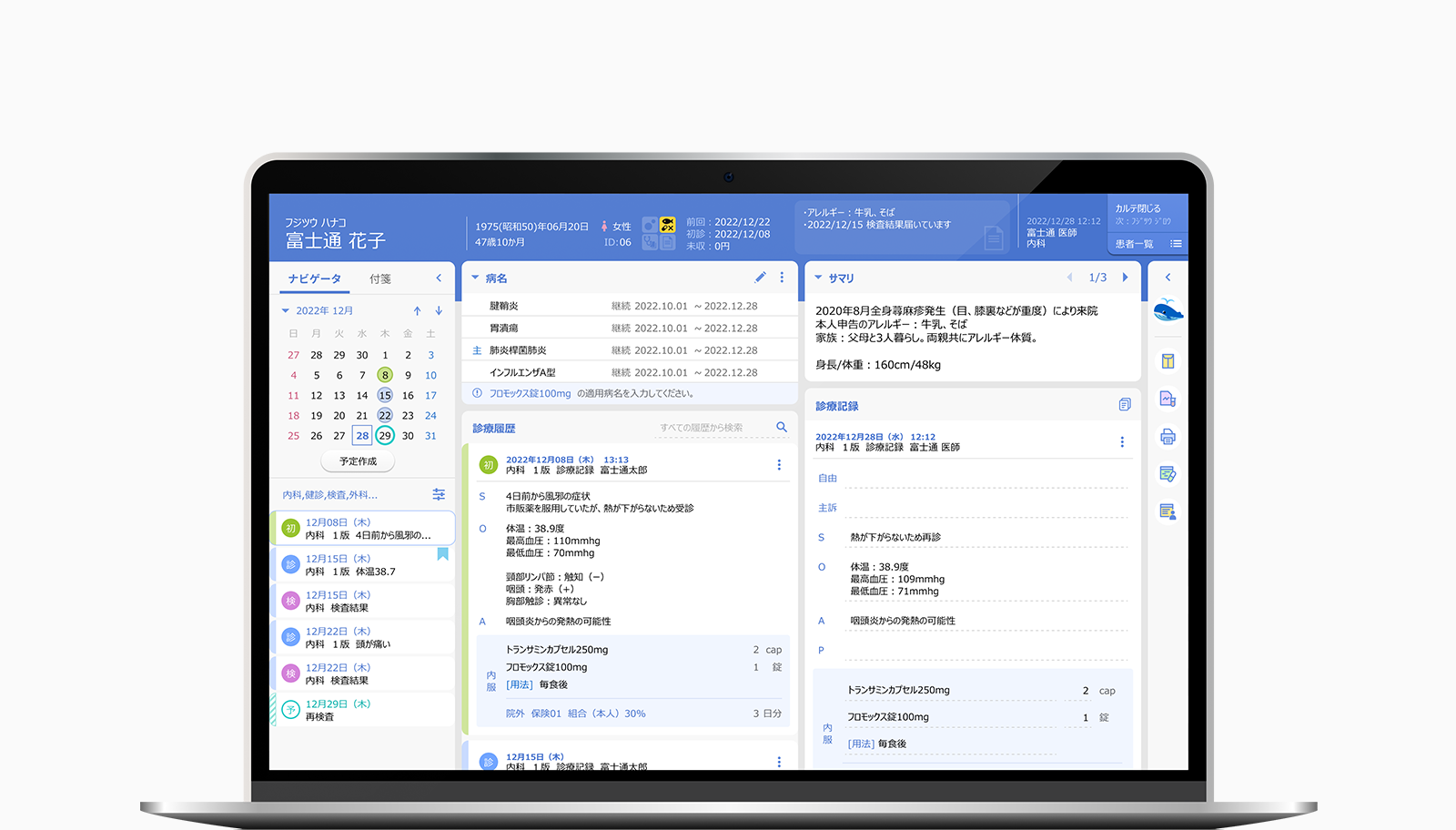 HOPE LifeMark-SX System (example)
HOPE LifeMark-SX System (example)——— When was the product finally released?
Kato: It was released in October 2022 as an electronic medical record for clinics, and we are currently developing additional features related to medical administration. For example, we are in the process of developing and enhancing features based on feedback from customers, such as support for the use of Individual Number Card as health insurance cards.
Kaneko: The sales method has also been revamped, with an online store that allows practitioners to choose a sales partner from the product list site, make inquiries, and subscribe on their own. There is also a trial of the product available, so users can try it out and get the hang of it before purchasing.
———Is the released SX Entry Model everything that you had envisioned?
Kaneko: I have been working on previous models in the SX series for more than 10 years now, but this time, as designers were able to design the best possible UI, and have it be implemented, we couldn't have asked for more. Because we were able to design it from scratch with almost no restrictions on compatibility, we were able to create a close-to-ideal UI that even first-time users can use and easily understand. This is the best product I have ever worked on. We are incredibly proud of this product!
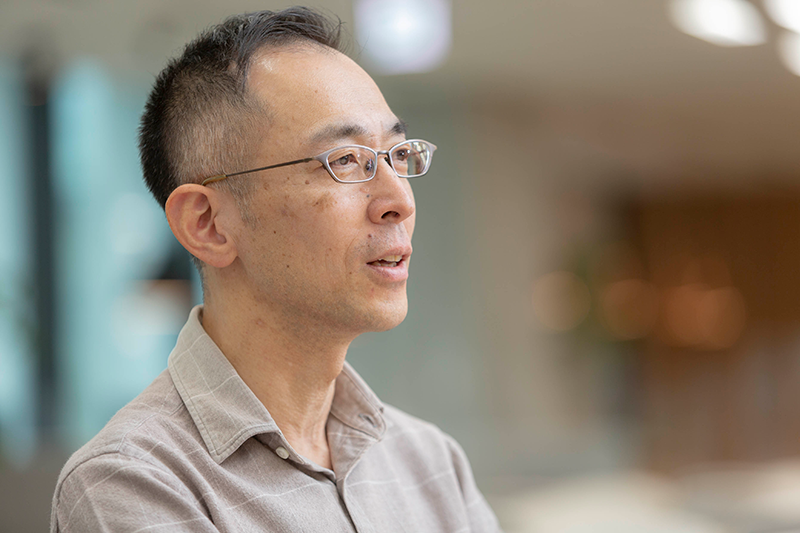 Mr. Kaneko, Design Center
Mr. Kaneko, Design CenterKato: When we showed the prototype to our sales partners, they were impressed with how easy it was to understand. As we had not been able to implement suggestions due to various restrictions in previous products, both customers and partners told us that this was what they had been waiting for. We were also pleased to hear that customers thought the features were simple and made it easy to transition from paper to electronic medical records, which is exactly what we aimed for with the design.
——— What factors contributed to the creation of this product you're so proud of?
Kaneko: The Healthcare Division and the Design Center were able to take advantage of their respective strengths. But I think the biggest factor was our mutual respect when working with each other.
Kato: This project was an invaluable experience for me as I was able to contribute from the product planning stage. I'm, of course, always thrilled when customers enjoy products I have helped design, but this time, the most rewarding part was knowing that we successfully worked together to develop a great product.
——— Not only in regard to this product, but in general, what do you always keep in mind as a designer?
Kato: Whenever I see or use something around me, I always try to stop and actually think about it. I think that having questions like "is this the best it could be?" and "is this really the best way to use it?" can help you develop ideas as a designer.
Kaneko: I agree. Plus, if you think "how can we make this closer to the ideal," you can bring your vision to life, rather than letting it die as a mere pipe dream. I hope we can embody Fujitsu's previous motto of "Turning dreams into reality." As part of this, I have been researching new services related to online medical care on my own. I started this project with the hope of contributing to the DX of the healthcare system. We have an internal system whereby internal papers provide opportunities for business connections, and I hope to make this a major project in the future.
Kato: I'm a parent, and the clinic I take my kids to uses the SX series. I would like to keep actively contributing to work like this that leads to UX/UI improvements for products used in and around me and my family.
Kaneko: I am proud to say that designers were involved from the product planning stage to create a product that is easier to use and understand than ever before, and that fits the needs of the user. We believe that there are many situations where designers can demonstrate their value, even in new areas such as DX. We hope that this will be an opportunity for the Design Center to expand the scope of its work.
Related Information